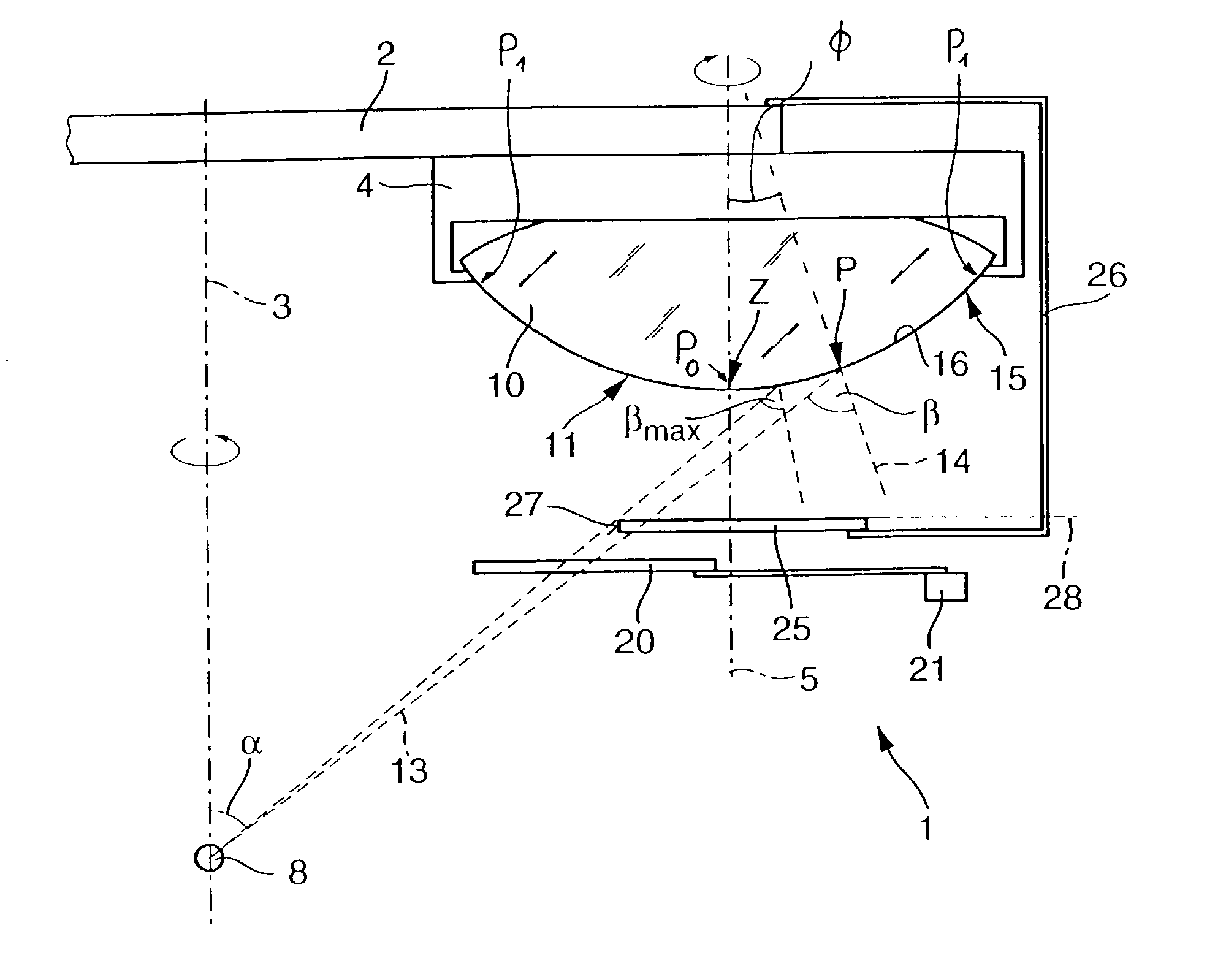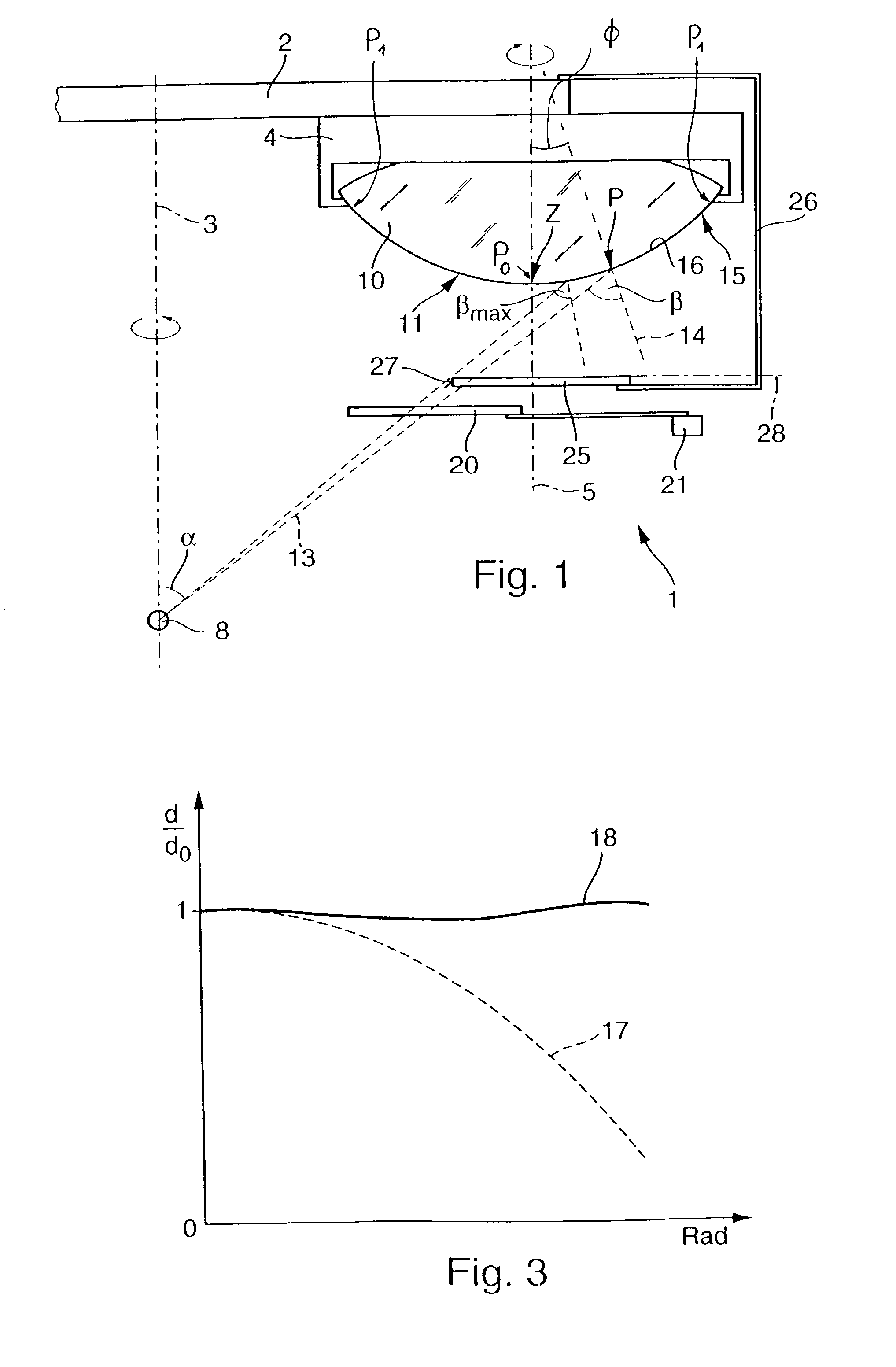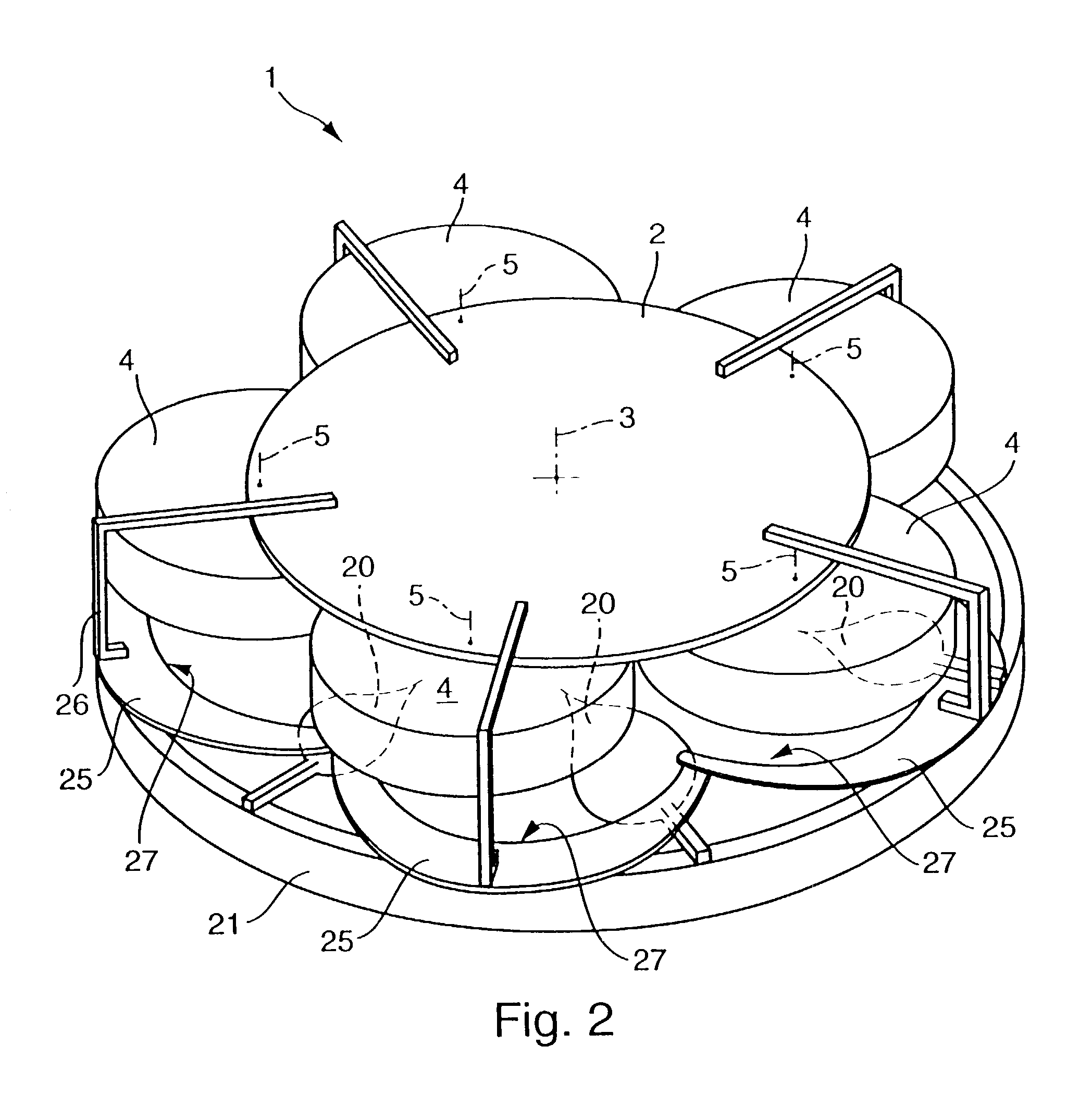Method and coating system for coating substrates for optical components
- Summary
- Abstract
- Description
- Claims
- Application Information
AI Technical Summary
Benefits of technology
Problems solved by technology
Method used
Image
Examples
Embodiment Construction
[0053] FIG. 1 schematically depicts the geometric arrangement of major components of an evaporation system with which optical components for microlithographic projection systems, in particular, lenses having sharply curved surfaces, may be coated using electron-beam evaporation methods or other PVD-methods, including sputtering, where the extension of the material source is preferably small compared to the coating system's dimensions, i.e. where the material source represents a quasi-point source. Since it may be desirable to simultaneously coat several substrates, which will normally be of similar type, under largely identical processing conditions on costing or technological grounds, the coating system has a planetary-drive system 1 situated within an evacuable coating chamber that is not shown here for moving the substrates to be coated during coating. This planetary-drive system has a nearly circular, disk-shaped, primary carrier 2 that is also termed a "planet carrier" and may ...
PUM
| Property | Measurement | Unit |
|---|---|---|
| Fraction | aaaaa | aaaaa |
| Fraction | aaaaa | aaaaa |
| Fraction | aaaaa | aaaaa |
Abstract
Description
Claims
Application Information
 Login to view more
Login to view more - R&D Engineer
- R&D Manager
- IP Professional
- Industry Leading Data Capabilities
- Powerful AI technology
- Patent DNA Extraction
Browse by: Latest US Patents, China's latest patents, Technical Efficacy Thesaurus, Application Domain, Technology Topic.
© 2024 PatSnap. All rights reserved.Legal|Privacy policy|Modern Slavery Act Transparency Statement|Sitemap



